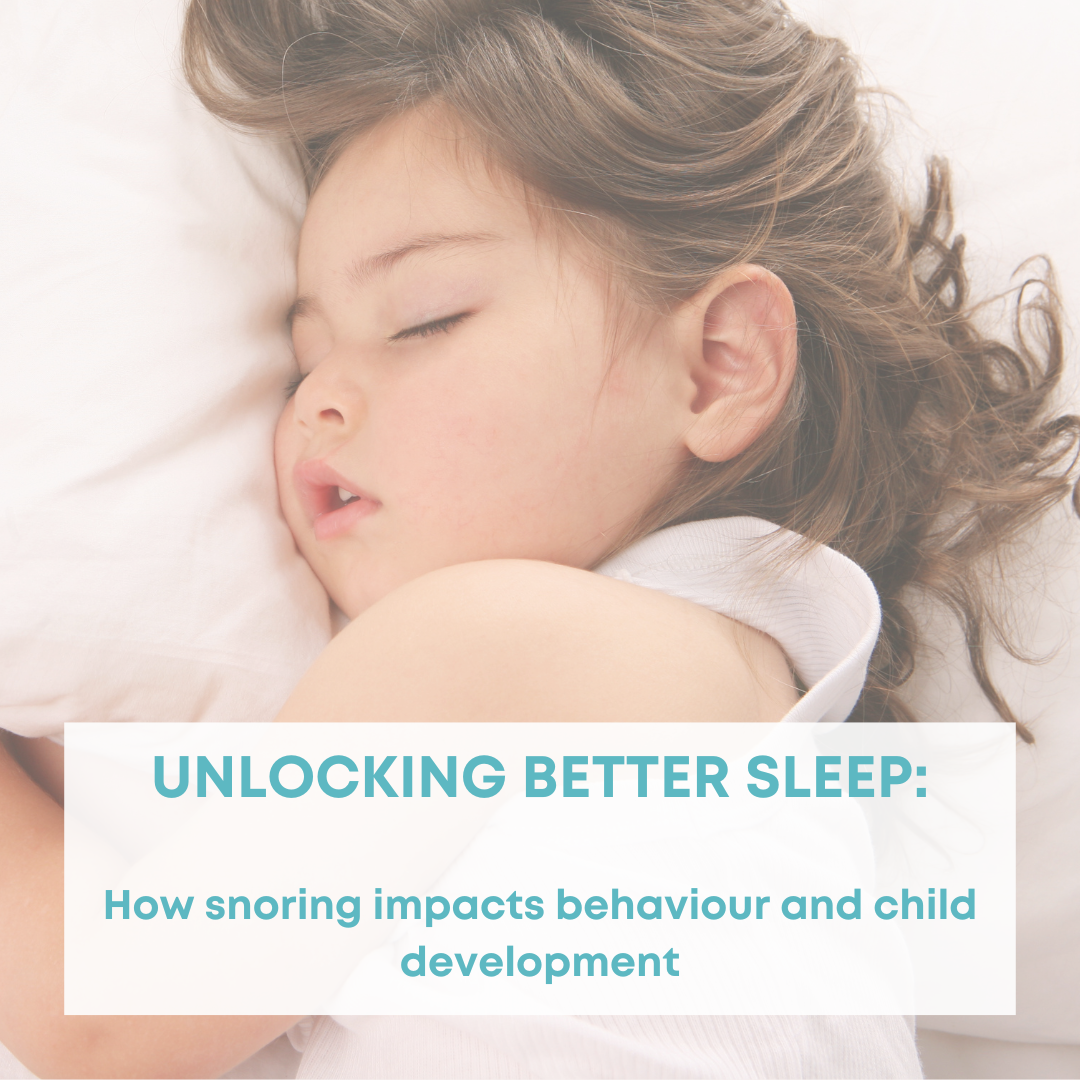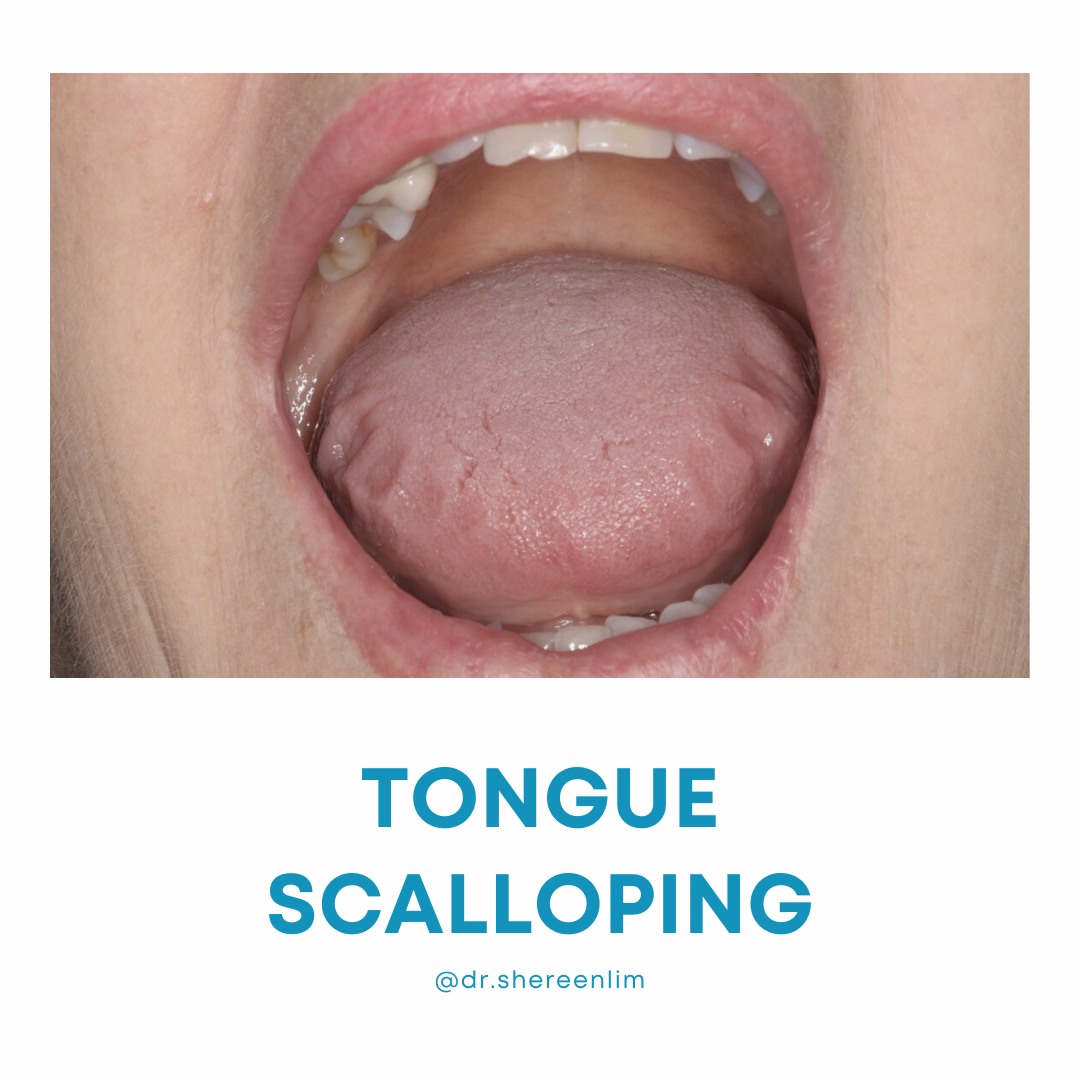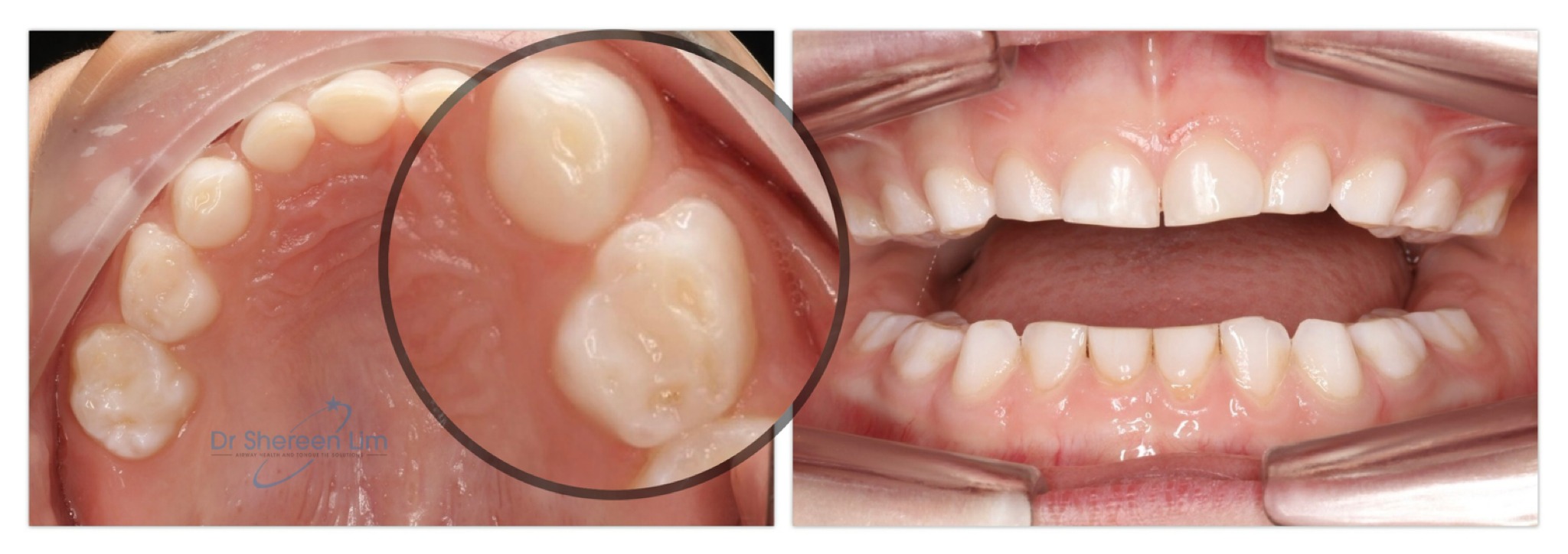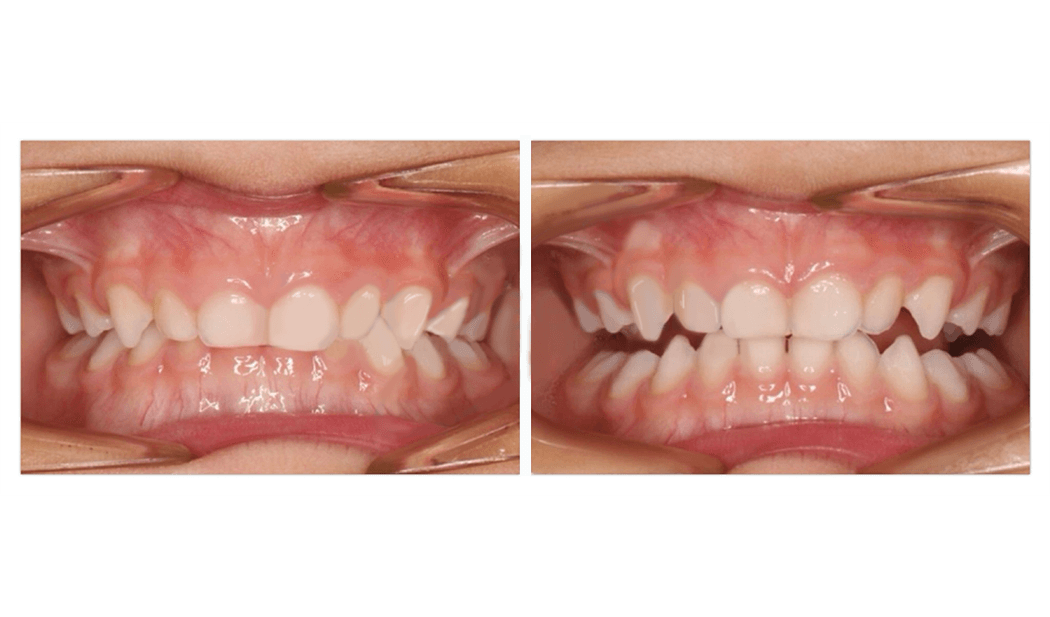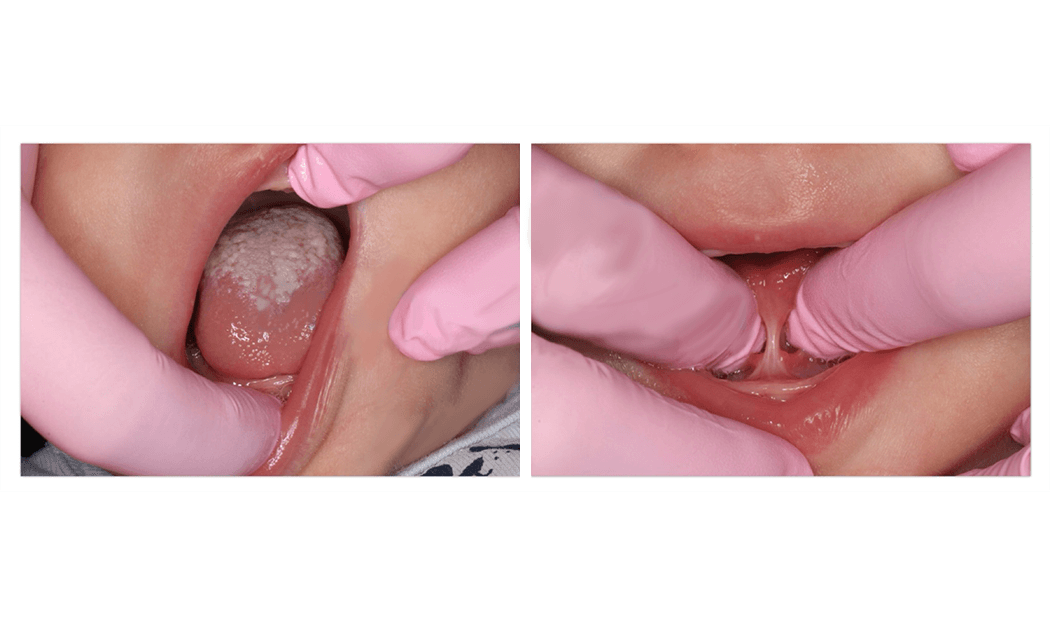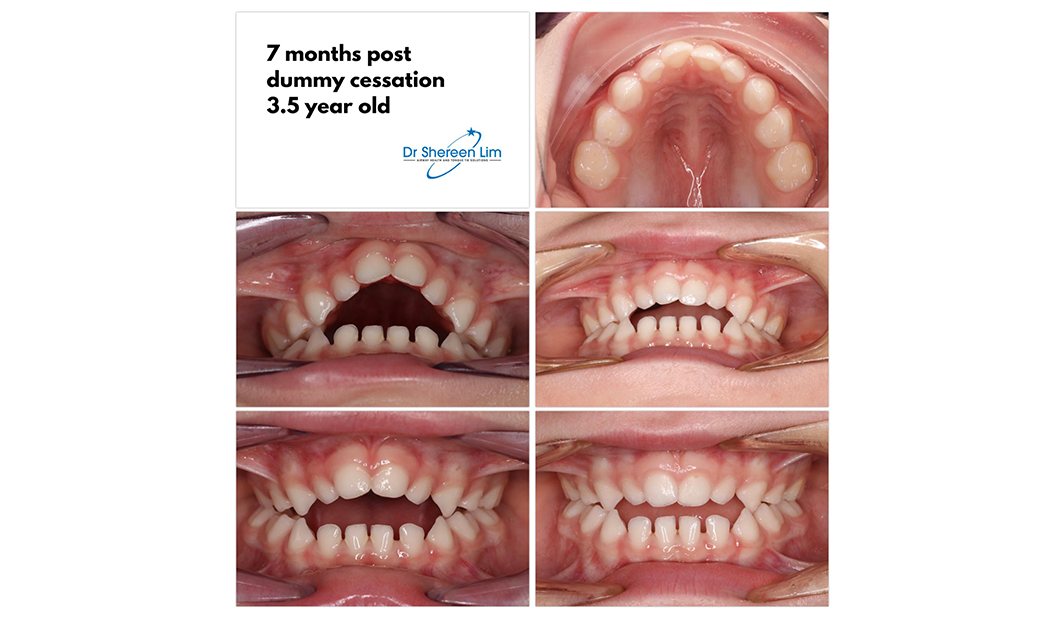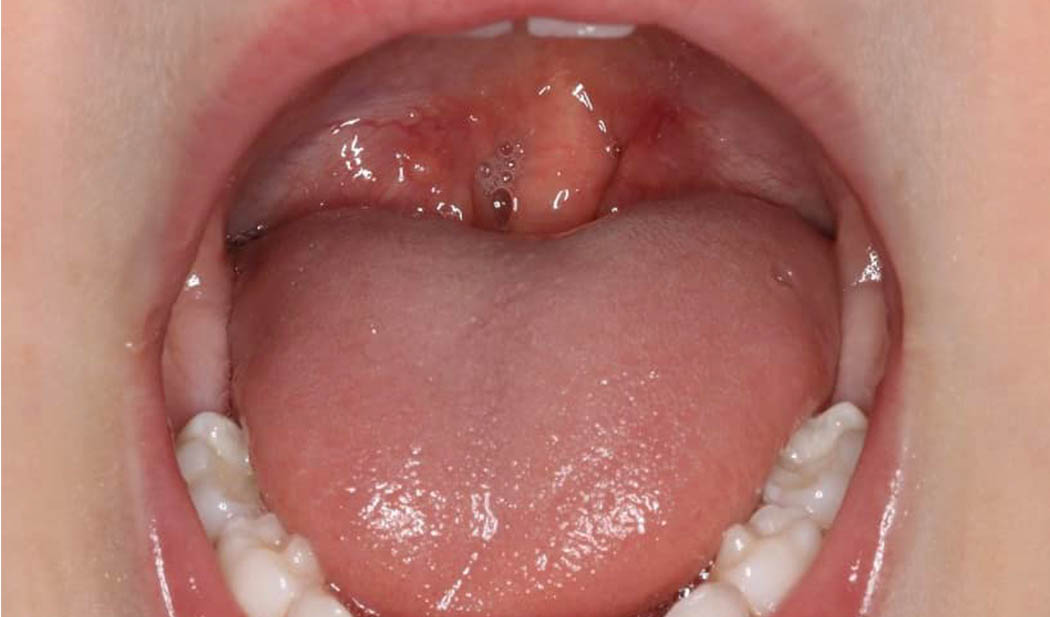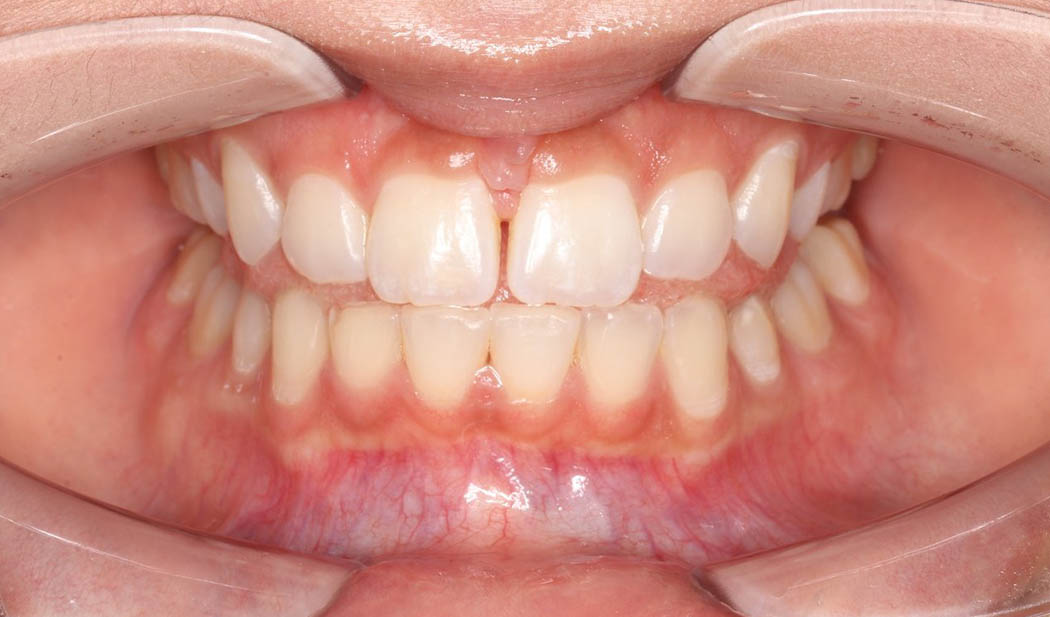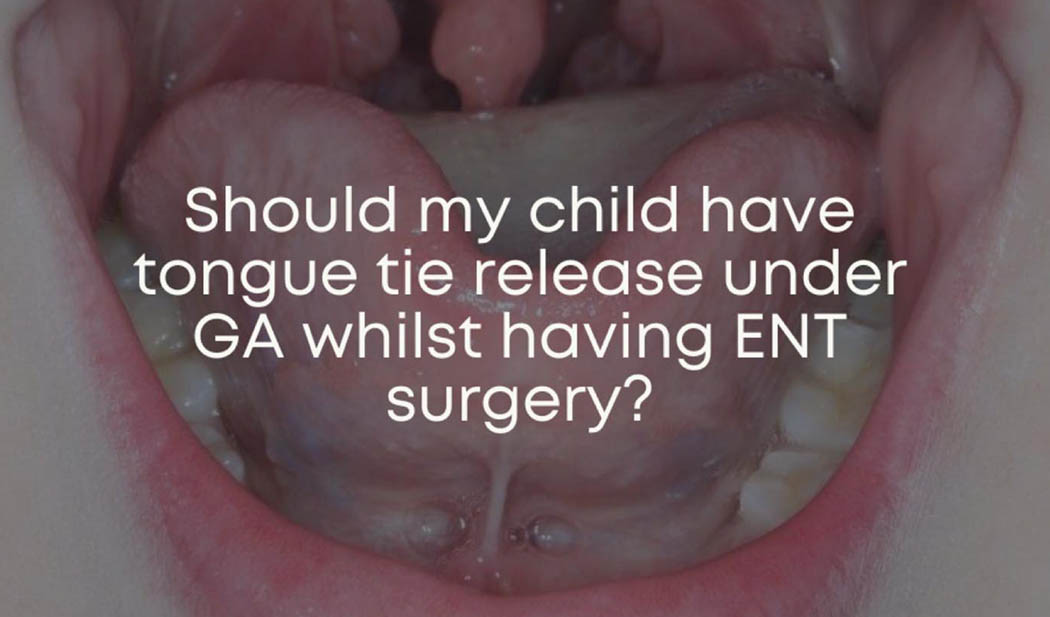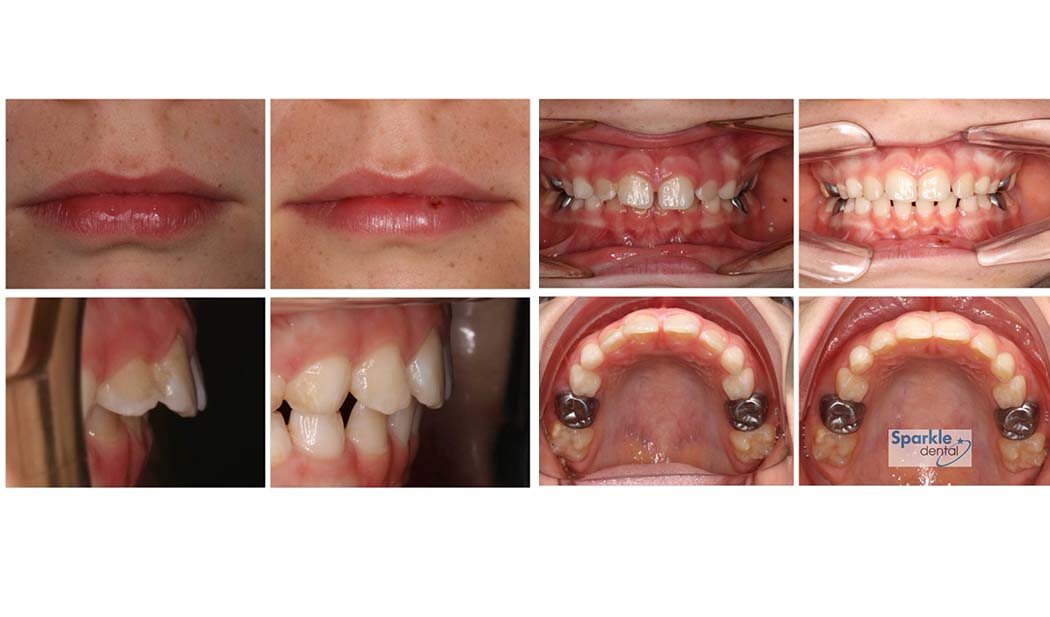Do you ever notice your child snoring during their sleep? Perhaps you dismissed it as normal or even cute? However, what if I told you that snoring could be a sign of something much deeper? In this blog post, we’ll explore how snoring can impact your child’s behaviour and development, and why it’s crucial to pay attention to snoring or mouth breathing during sleep.
Restorative sleep is critical in the early years of childhood when children are experiencing peak brain development. 90% of the adult sized brain is attained by age 3 years. And just as important as sleep quantity is sleep quality. Dysfunctional breathing including mouth breathing and snoring can fragment sleep and rob children of its restorative benefits. Yet many parents are not aware of what to look for, and most of us are happy not to look as long our child sleeps through the night and doesn’t interrupt us!
What Can Parents Look For?
Red Flags During Sleep:
When a child is sleeping, breathing should be quiet, a child should look still and peaceful, and their lips should seal, with breathing through the nose. Any deviation from this could indicate a child is not achieving their most restorative sleep.
- Mouth breathing
- Snoring or audible breathing
- Gasping or pauses in breathing
- Neck hyperextension
- Stomach sleeping
- Restlessness
- Sweating
- Teeth grinding
- Bedwetting
- Frequent terrors or nightmares
- Unexplained awakenings
- Difficulties falling asleep
Red Flags During the Day:
A child who is experiencing chronic deprivation of restorative sleep will not necessarily present like a sleepy adult. They may present with symptoms of overtiredness, or ADHD-like behaviours.
- Feeling unrefreshed on waking
- Dark circles under the eyes
- Difficulties with emotional regulation
- Poor attention and concentration
- Hyperactivity
- Difficulties sitting still
- Difficulties with learning
- Anxiety
- Headaches
- Difficulties chewing and swallowing
- Speech and language concerns
Often, many of these symptoms are managed individually, or even medicated, without consideration of underlying airway problems. They may be dismissed as typical childhood issues that children outgrow out of. But compelling research supports that unaddressed airway problems can have a significant impact on a child’s behaviour and academic performance.
The Dental Connection:
Snoring is a symptom of narrowed airways, and this is expressed during sleep when our muscles are relaxed, our reflexes that keep the airway open are not as active, and we are lying on our backs.
The underlying airway insufficiency can be related to our jaw structures, which form the floor of the nasal passages, housing for our tongue, and the bony framework for our collapsible upper airway or throat.
As important as it is to see an Ear, Nose and Throat specialist to check for obstructions inside the airway, the dental profession has a role in assessing and modifying the outer framework or box formed by the jaws. Common orthodontic problems including crooked teeth can be a symptom of poor jaw and airway development. A dental professional with a special interest and training in airway can help assess and determine if early orthodontic intervention will be of benefit.
In addition, the jaws grow most rapidly in early childhood. The muscles of the mouth, jaws, and face provide the functional stimulus for the jaws to grow well. Dental professionals are well placed to pick up poor muscle habits including open mouth breathing and tongue-ties that may linked to poor jaw and airway development.
Other clues in the mouth a dental professionals can detect that may reflect increased risk of breathing problems include enlarged tonsils, increased risk of decay, dental wear from teeth grinding or reflux disease, and poor swallow patterns including gagging during dental visits.
Additional Functional Clues to Be Aware Of:
If we know that oral dysfunction can lead to improper jaw and airway development, other potential clues in a child’s functional history to consider include:
- Difficulties with breastfeeding
- Reflux like symptoms during infancy
- Difficulties with chewing and swallowing solids, or picky eating
- Dummy use or thumb and finger sucking habits
- Speech concerns including lisps and misarticulations
- Allergies and chronic nasal congestion
- Recurrent ear infections or glue ear often linked to altered swallowing
- Chronic open mouth posture
- Tongue thrusts
Myofunctional therapy to address poor muscle habits can play an important role in addressing oral dysfunctions. It can be an important missing link to restore nasal breathing and good tongue function in combination with interventions like ENT surgery, orthodontics, and tongue-tie release.
Taking Action:
If your child snores regularly or exhibits other signs of sleep-disordered breathing, it’s essential to take action. An airway-trained dental professional can be a good starting point for assessing risk factors and initiating interdisciplinary referrals and management.
Questions to Ask Your Dental Professional:
To find out if your dental professional is airway-focused you can ask questions like:
- Do you refer patients to an Ear, Nose, and Throat Specialist?
- Do you offer or refer patients for Orofacial Myofunctional Therapy?
- Do you offer or refer patients for tongue-tie release?
- Do they inquire about children’s snoring or mouth breathing on their new patient intake forms?
If they answer yes, then they are more likely to have a comprehensive approach to children’s airway health.
Conclusion:
Snoring can have far-reaching effects on your child’s behaviour and development, yet many health care professionals receive little training in the area. By recognizing the connection between snoring, behaviour, and oral health, you can take proactive steps to ensure your child gets the quality sleep they need for optimal growth and development. Don’t ignore the snore; it could be the key to unlocking better sleep and a brighter future for your child.
Additional Resources for Further Learning:
Visit the Children’s Airway First Foundation website for a comprehensive compilation of informational resources.
Read Dr Shereen Lim’s book Breathe, Sleep, Thrive: Discover how airway health can unlock your child’s greater health, learning, and potential.

